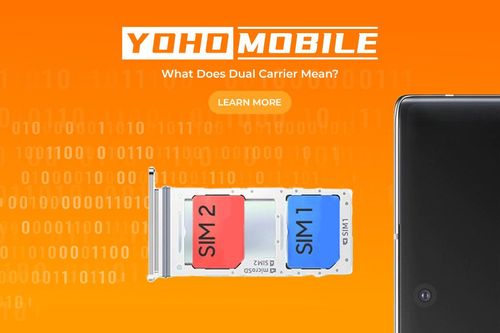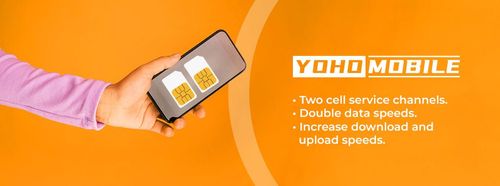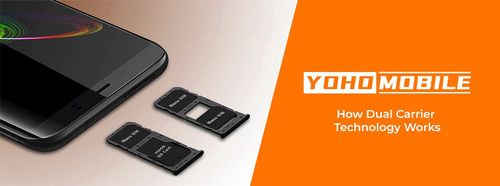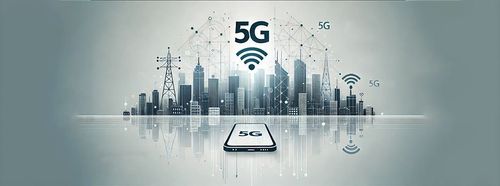In today’s world of smartphones and constant connectivity, people want faster and more reliable data. But, have you ever thought about how your phone can download files? It can also stream videos or browse the web so quickly. That’s where dual carrier technology comes in, as it has revolutionized mobile data transmission. It allows for faster and more stable connections in busy places.
This article explains what dual carrier is and how it works. Additionally, it covers its benefits, uses, and its future.

What Does Dual Carrier Mean in Technology?
This technology is often called DC-HSDPA. It lets mobile networks get two cell service channels in a user’s system, thereby doubling data speeds for users. It’s an enhancement of the network.
HSPA+ (High-Speed Packet Access) included this tech. It lets 3G networks use two channels for mobile devices. They receive from two different streams. As a result, download and upload speeds are greatly increased.

How Dual Carrier Technology Works
To understand what dual carrier means, you need to know how a mobile network works. Single-carrier systems use one stream to send data. However, networks using this technology use two streams at the same time, which provides twice the data capacity.
A phone that supports this tech connects to a network, creating two data streams on different channels. These streams are combined to provide one fast data connection. The user doesn’t notice this but experiences faster download and upload speeds.
Moreover, the tech uses advanced signal processing and smart algorithms to keep both data streams in sync. This is essential to maintain a strong connection, even with personal movements or in crowded areas.

Benefits of Dual Carrier Technology
Using two channels at once doubles the data speed, resulting in increased data speeds as a major benefit. Users get faster downloads and uploads.
Also, this technology improves network performance. It splits data transmission into two channels. This reduces congestion on any one carrier. This increases connection reliability, especially in busy areas.
It also uses many channels. This ensures more users get high-speed data without losing performance.

Uses of Dual Carrier Technology
Various industries and devices benefit from this technology. For instance, the telecom industry uses it in mobile networks, allowing consumers to access data at high speeds. Mobile devices like smartphones and tablets have it, offering faster, more reliable data.
Also, these industries need high-speed data. They include telemedicine and connected vehicles. In healthcare, it enhances online medical services, enabling real-time consultations and follow-ups. In transportation, it gives real-time traffic updates. It ensures they are accurate and timely.
Comparing Single and Dual Carrier Technology
Single-carrier and dual-carrier technology differ in speed, coverage, and performance. Single-carrier systems use one channel, limiting data capacity and peak data speeds. Consequently, they struggle to provide fast data in high-traffic areas.
In contrast, dual carrier systems use two channels at the same time, doubling data capacity and speeds for fast downloads and uploads. For this reason, this technology is beneficial in applications that require rapid data transfer.
Also, congestion on one channel can harm single-carrier systems. But, dual-carrier systems spread data across two channels. This provides better coverage and capacity in high-population areas.
| Feature | Single Carrier | Dual Carrier |
|---|---|---|
| Data Transmission | Uses one frequency band | Uses two frequency bands |
| Data Speed | Limited by single-band bandwidth | Double the data rate |
| Network Performance | May struggle with high-traffic | Improved, handles high traffic better |
| Connection Stability | Less stable in congested areas | More stable, less interference |
| Coverage | Limited by single-frequency congestion | Enhanced, less affected by congestion |
| User Experience | Slower downloads/uploads | Faster, smoother internet experience |
| Efficiency | Lower spectrum efficiency | Higher spectrum efficiency |
| Applications | Basic mobile internet calls | High-speed internet, streaming, gaming |
| Technology | Traditional single-frequency modulation | Advanced dual frequency modulation |
| Latency | Higher latency in crowded networks | Lower latency, even in busy areas |
Future of Dual Carrier Technology
The future of this technology is promising, with numerous advancements and potential applications. One future path is to integrate it with 5G networks, which are being deployed globally. This technology will enhance network performance and enable faster data and connections. Also, you can see this comparison to understand how revolutionary the 5G network is becoming.
Researchers are exploring better ways to send signals, aiming to improve the power and capacity of dual carrier networks. They are also looking at multiple signal systems. Also, future tech suggests using this tech in many industries. It supports the growing number of devices and apps that rely on fast data. It will play a vital role in the next generation of online services.

FAQs
What does dual carrier mean in a smartphone?
A dual-SIM smartphone holds two phone chips at once, letting one person have two phone numbers and data plans on one device. This setup lets them separate personal and business calls, and they can use networks from different providers.
Can you have two SIM cards with the same number?
You can’t have two phone chips with the same number. Each phone chip gets a unique number from the network company. However, some companies offer call redirecting. They also offer multi-SIM services for multiple devices with a single number.
What does dual carrier mean compared to single carrier?
Single-carrier systems use one channel to send data. Dual-carrier systems use two channels at the same time. This results in faster speeds, better performance, and more reliable connections.
